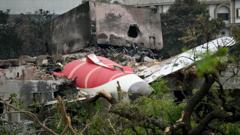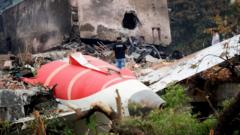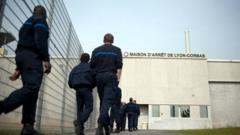A recent report sheds light on the circumstances surrounding the catastrophic Air India Flight 171 crash, resulting in the loss of over 260 lives. As families grieve, the investigation into potential mechanical failures continues.
Tragic Air India Flight Crash Highlights Aviation Safety Concerns

Tragic Air India Flight Crash Highlights Aviation Safety Concerns
Preliminary investigation into the Air India Flight 171 disaster reveals alarming details amid mourning for victims.
On June 12, the Air India Flight 171 disaster erupted in chaos when a Boeing 787-8 crashed shortly after departing from Ahmedabad, heading towards London. Striking the dining area of a nearby medical institution, the crash led to tragic fatalities: all but one of the 242 individuals aboard perished alongside numerous ground casualties, marking one of India’s gravest aviation tragedies in recent years.
As investigators dig deeper, a preliminary report from India's Aircraft Accident Investigation Bureau offers insights into events leading to the crash. The timeline begins at 11:17 a.m. local time when the jet completed its earlier domestic flight from New Delhi, where crew members noted a possible sensor issue impacting the aircraft's stabilizer.
At 11:55 a.m., the flight crew, consisting of two pilots and ten cabin attendants, arrived at Sardar Vallabhbhai Patel International Airport. They underwent standard preflight alcohol tests, which they passed, suggesting no immediate human error at this stage.
Nevertheless, more extensive inquiries into the crash's root causes are necessary. Investigators are expected to take several months to reach definitive conclusions, but the suffering and loss endured by families of the victims remain profound. As the investigation unfolds, many in India and abroad push for a heightened emphasis on aviation safety to prevent such devastating incidents in the future.





















